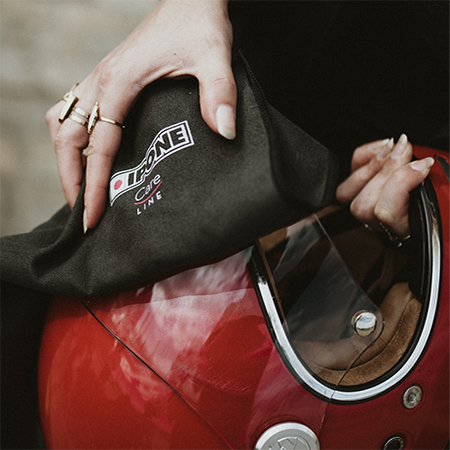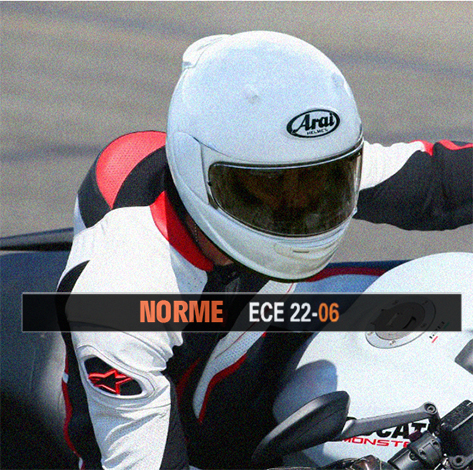The full-face helmet is a technical subject, full of little details , and to make sure you don't forget anything, I suggest we take a tour of a full-face motorcycle helmet together. Points to remember when choosing your helmet :
The shell
First things first: the helmet's outer shell. Its mission is to absorb the impact of a bowl without splitting in two. There's a choice of materials: thermoplastic, polycarbonate, fiber and carbon.
To put it simply, "entry-level" helmets have a plastic cap, also known as thermoplastic. A plastic skullcap does its job of protecting the wearer in compliance with current standards. Polycarbonate helmets are also plastic-based, but offer a higher level of impact absorption than thermoplastics. The main drawback is weight. They are heavier than fiber or carbon.
Mid-range and top-of-the-range models have fiber caps. Each brand has developed its helmet shell by mixing different types of fiber. In general, a fiber helmet is designed by hand, as is the case with ARAI, for example.
Finally, there are carbon helmets. These are the lightest and strongest. The manufacturer makes the shell from a mix of fiber and carbon. The only drawback is that they can be noisier, especially in wet weather. Carbon is stiffer, so it tends to resonate more.
Air vents
On the outside of the helmet shell, you can also see air vents and extractors (at the rear). The concept is as simple as can be: little holes in your skullcap, which then continue into channels dug in the polystyrene so that a small current of air comes to refresh you.
In the same spirit, you'll have nose-covers and bibs. Attached above and below your chin strap, they prevent icy air from rising up your cold-reddened nose in winter. For the "always on" type, they're an invaluable tool. What's more, they're often removable once spring arrives. So, when choosing a helmet, it's best to choose one with these not-so-small details.
Closures
Almost all helmets come with "micrometric" buckles (plastic or alloy, depending on price). It's a small, notched mechanism, intuitive and easy to clip on with gloves.
On top-of-the-range helmets (or racing helmets), on the other hand, you'll have a silly "double-D" buckle, worthy of an old vintage military bag strap. That's what GP riders have. With a bit of experience, you can adjust your tightening to the nearest millimeter, and you've got an insane resistance to tearing. This was the safest system before the advent of Fidlock buckles.
The first manufacturer to integrate this type of buckle was KLIM. It's a magnetic buckle that attaches in the blink of an eye.
The visor
Optical quality depends on the brand. In general, top-of-the-range brands offer better optical quality and less distortion. One point not to be overlooked is the risk of fogging on the screen, especially in winter. The ultimate weapon is the Pinlock. This is a small screen, a bit like double-glazing, which prevents fogging on your main screen. Fog-treated" visors are less effective, as the treatment tends to fade over time.
Inside the helmet
The quality of the internal foam is crucial. A low-end helmet will have foams that pack down faster than a top-of-the-range helmet. Their comfort and ability to wick away perspiration should also be taken into account. And don't forget that your helmet's internal foams need to be washed regularly - it's a question of hygiene.








































































































